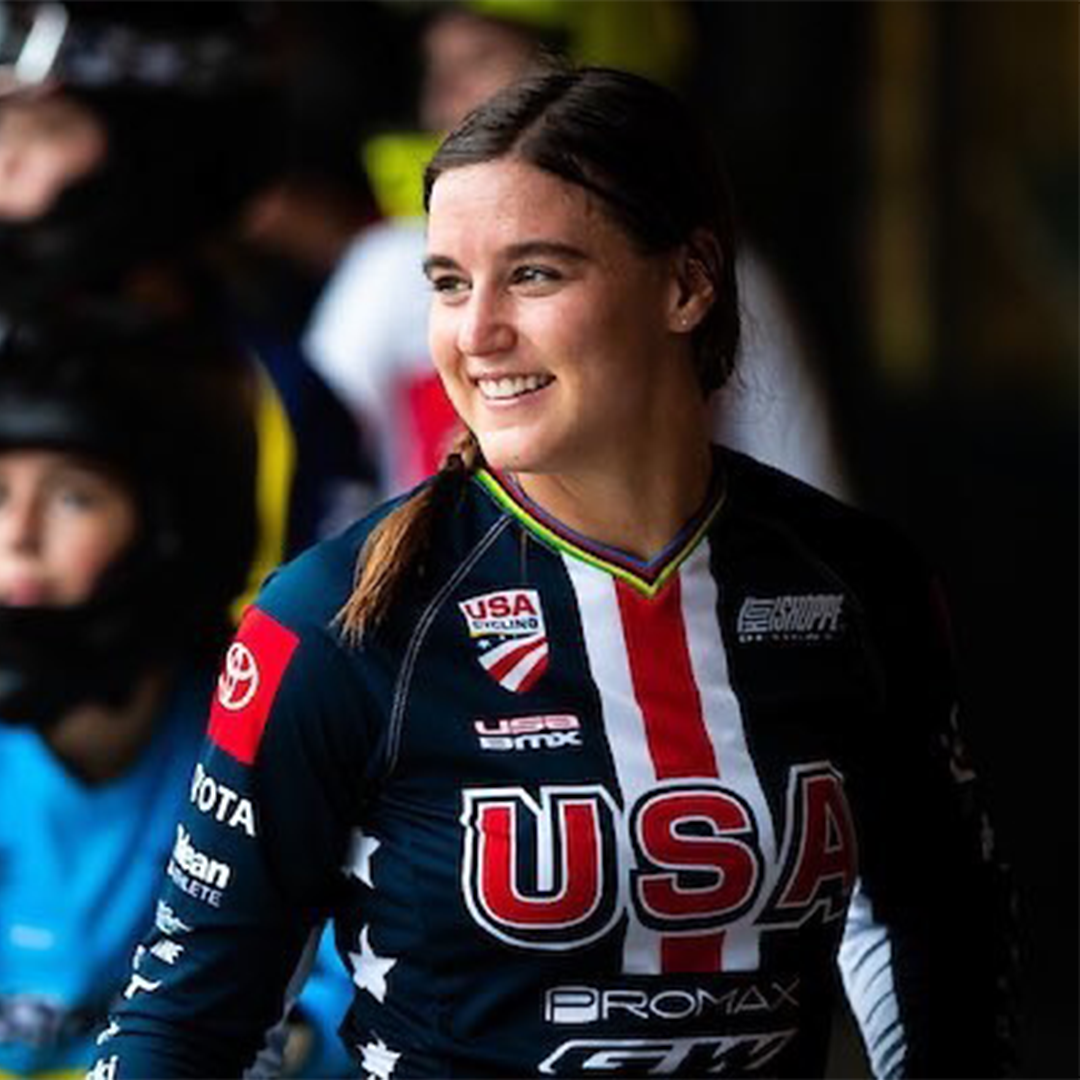How did BMX get started? Who invented BMX? When did BMX become an Olympic sport? You may have been wondering this after seeing BMX pop up in the mainstream sports news media recently amidst all the pre-Olympic buzz. Or maybe you already know the basics, the nuts and bolts of BMX riding and BMX bikes, but you do not know much about the sport’s origins and development. Whether you are a veteran racer, a rookie just learning the rules, a BMX enthusiast, or simply a curious sports fan, the history of bicycle motocross is a fascinating story you definitely do not want to miss.
BMX in the Limelight
What makes BMX special? Why is BMX worthy of your time and attention, besides the basic fact that the watching, cheering, and racing make it an incredibly fun event for the whole family? The reason is simple, really. Like every other sport, BMX is about competition and skill, who can ride the fastest and perform the most difficult, awe-inspiring tricks on two wheels. But BMX is just as much about community and connection, people coming together to support and celebrate something they believe in, an endeavor that has in some way changed their lives for the better. More than the insane stunts, the crazy speed, and the expert handling, the ever-growing BMX community is what makes the sport really special.
Over the past few decades, this exhilarating action sport has captured the hearts of millions of cycling fanatics and thrill-seeking youngsters around the world, and it continues to gain momentum among all age groups because of its bold originality, seductive riskiness, and easy accessibility. Yet, even with all of its amazing attributes, BMX’s rise to its present status was by no means a sure thing from the start. There were many bumps, shifts in trajectory, internal divisions, and near deaths on BMX’s path to the Olympics. These challenges and changes together shaped BMX into the sport it is today.
Now, with the Tokyo Summer Olympics in sight and countries assembling their teams, BMX is once again enjoying the attention it deserves. Unfortunately, however, despite its Olympic status, BMX remains widely misunderstood by those outside of the cycling community, to the detriment of the progression of BMX as a sport and potential BMX riders and fans. With the Olympic season drawing near, now is the perfect time to learn more about the inception and evolution of one of the newest and coolest Olympic sports—BMX.
Compared to the ‘traditional’ summer Olympic sports such as swimming, basketball, volleyball, and gymnastics to name a few, BMX has a much shorter history as a sport and a smaller, more select following. When stacked against these behemoths, BMX is really still in its infancy. Yet, while BMX is one of the lesser-known sports on the Olympic programme, its unique roots, continued evolution, and highly dedicated and tight-knit core of followers make BMX a distinctive Olympic event well worth keeping one’s eyes on now and in the future. So how did BMX get to where it is today? 
The Birth and Blossoming of BMX
The roots of the BMX scene can be traced back to dirt tracks scattered across Southern California in the mid 1960s, around the same time that motocross was taking off in the U.S. Young kids who were captivated by off-road motorcycle racing but either could not afford to ride motocross or were not allowed to by their parents instead raced bicycles on their own self-made courses in their backyards, eventually leading to the development of formal, specially-built race tracks for bicycles the following decade. Races quickly got bigger, spawning a nationwide movement that became known as BMX.
In the very beginning, kids simply raced on their garage bikes. Breaking them down roughing it on the dirt was fun, but these standard mass-produced factory bikes could never satiate young BMXers’ appetite for speed and agility. Kids started to take their old 20-inch bikes and customize them by replacing the factory seats and handlebars with “banana” seats and tall “butterfly” handlebars to increase their speed and control. At the time, bike technology was also extremely limited. There was little variety in bike models and bike components simply because no one was yet aiming to launch themselves twenty feet in the air from a dirt jump and perform tricks while flying upside down. The BMX bike market was nonexistent.
Then came the Schwinn Sting-Ray, known as “the bike with the sports car look,” a bike that revolutionized cycling and dominated the early BMX scene because of its one-of-a-kind design and ease of customization. The original Sting-Ray was modeled after the way kids in Southern California were refitting their own bikes. BMX riders loved the Sting-Ray’s high-rise handlebars, short frame, and long, bucket shaped saddle that allowed them to perform quick maneuvers with ease. The 1972 motorcycle documentary ‘On Any Sunday,’ widely acknowledged as one of the biggest inspirations of the BMX movement and a pivotal point in BMX history, shows a group of kids going off-road on their Sting-Ray bikes in the opening scene. Toby Henderson, BMX legend and President of Box, said this about his experience racing on a Sting-Ray at the start of his career: “It handled everything better than any other bike I rode at that time.”
Soon BMX bikes were being made custom. They were built with smaller wheels, lightweight frames, and only one gear to maximize speed, control, and jump height. BMX bikes were distinguished from mountain and road bikes by their superior mobility and strength as well as their ability to perform jumps and to respond to rapid speed changes better than any other type of bike. Advancements in cycling technology and engineering breakthroughs every decade since the 1960s have made the modern BMX bike nearly unrecognizable to its predecessors.
BMX has no doubt come a long way from its humble beginnings in Southern California, rapidly developing from a mere backyard hobby for kids and adrenaline junkies to an official Olympic sport with millions of riders and followers and thousands of annual competitions worldwide. 
BMX Racing Becomes an Olympic Sport
In order for BMX to become an officially recognized sport, it needed systematized rules and regulations. The American Bicycle Associate (ABA) became the national body for BMX in 1977 and proved instrumental in organizing and promoting the sport within the U.S. In 1981, the International BMX Federation was formed, and the first world championships were held in 1982. The following year, BMX was integrated into the organizational framework of the Union Cycliste Internationale (UCI), the worldwide governing body for cycling.
Every year the Union Cycliste Internationale hosts the UCI BMX World Championships and the UCI BMX World Cup, a series of competitions held across many countries leading up to the World Championships that, among many other things, determines BMX world rankings. The UCI World Championships are the capstone of the BMX season, attracting extensive international attention and media coverage. World champions wear the prestigious rainbow jersey for the entire year. The UCI rainbow stripes are one of the most renowned and coveted marks in cycling.
BMX racing made its Olympic debut at the 2008 Games in Beijing. The setup of the Olympic event is as follows: Eight riders launch themselves from an eight-meter-high ramp and race over a 350-meter circuit featuring alternating bumps, banked corners, and flat sections. Riders who finish in the first four of the heats earn a spot in the next round and then in the final.
Exposure at the Olympics along with televised competitions such as the X Games have helped the sport grow exponentially over the past couple of decades, attracting a wider audience in all corners of the world.
BMX freestyle will be a medal sport for the first time at the Tokyo Olympic Games. Freestyle competitors will perform two-minute runs executing a sequence of tricks on ramps, walls, box jumps, and spines throughout the sports park.
Box Bike Parts and Sponsored Riders
Box bike components, in particular Box One and Box Two parts, are widely used by World Cup champions. These BMX racing parts are engineered using Box’s signature, cutting-edge Oversized Technology that delivers enhanced power, control, and speed by reducing energy loss due to flex. By optimizing both pedaling and steering stiffness, Oversized Technology allows riders to fully utilize and translate their strength into precise handling with less delay. The science behind the design of Box Oversized parts makes a winning difference and has helped Box’s riders qualify for UCI World Cup competitions.
Box’s engagement in the bike industry and BMX community extends beyond its products. Box is an official partner of UCI. Box designs and creates official BMX racing number plates, side plates, and decals used by all competitors. Box bike components and the team behind the brand are trusted by professional athletes and international organizations alike.

Pros Sponsored by Box
Multiple professional riders sponsored by Box are competing next month at the Tokyo Olympic Games, including the Dutch Team (Team NL), Saya Sakikabara, and Alise Willoughby, who will represent Team USA in the Women’s BMX racing event. Box’s partnership with Olympic silver medalist and two-time world champion Alise Willoughby is particularly special. Box has worked with Alise for many years now, offering her direct support with top-quality BMX racing parts and using the company’s platform to promote her remarkable career. Box’s development as a company and Alise’s progression as a racer have even somewhat mirrored one another. At the same time that Box became the leader in BMX components, Alise became one of the best BMX racers in the world with a personal story as captivating as her skill.
Alise started racing when she was six years old. In 2006 at the age of 15, Alise turned professional and was voted Rookie Pro of the Year by BMXer Magazine, the first woman to receive the title. Later that same year Alise became the youngest female racer in BMX history to win the American Bicycle Association national title. Alise is also the first female to have earned all three existing Girls division classifications: No. 1 Girl Amateur, No. 1 Girl Amateur Cruiser, and No. 1 Girl Pro. She won the silver medal at the Rio Olympics in 2016 and was the 2017 and 2019 UCI Women’s World Champion. Suffice it to say, Alise’s career has been full of broken records and extraordinary achievements, but it also has been anything but a smooth ride.
Throughout her career Alise has undergone multiple serious surgeries, including a knee and hamstring reconstruction one year before the London 2012 Olympic Games and a broken tibia plateau only a few months before the 2014 world championships. The year her mother passed away from late stage melanoma, Alise won the USA BMX Women’s Pro Series title. Alise embodies the fight, drive, and passion that make the BMX community a formidable force.
Looking Backward and Forward
As BMX and its riders continue breaking boundaries and reaching new heights, it is important to commemorate the sport’s history and to appreciate the people, the bikes, and the stories that propelled BMX to the status it holds today. During its time of decline, BMX could have easily faded away into obscurity, but the people who loved it, racers and enthusiasts from all walks of life, fought to keep it alive. Together they won that battle. And it is because of them that BMX is now a thriving Olympic sport and that radical bike technology like Box Oversized parts is possible and matters. The future of BMX, its exciting and promising future, is built on its past. That is why it matters.
Box wishes its riders the best of luck and smooth riding at the Tokyo 2020 Summer Olympics that will start this July 23, 2021 due to pandemic delays. We cannot wait to see what the Olympic season brings for one of the world’s greatest sports.
Articles referenced:
https://www.uci.org/bmx-racing/about-bmx-racing
https://bikehistory.org/bikes/stingray/
https://www.fatbmx.com/bmx-oldskool/item/53081-preserving-bmx-history-episode-59-toby-henderson-usa
https://mpora.com/bmx/short-history-bmx-sport-got-started/
https://boxcomponents.com/collections/oversized/oversized
https://www.teamusa.org/usa-cycling/athletes/Alise-Willoughby
Written by: Ashley Thomas




Comments
You’ve written it so well, and you have some really good ideas. This post is outstanding!
https://www.piwi247.com/
Little correction: It’s two 1-minute runs. Both runs count during seeding (July 31st), Best run (of the two) counts during finals (1 August).
BMX freestyle will be a medal sport for the first time at the Tokyo Olympic Games. Freestyle competitors will perform two-minute runs executing a sequence of tricks on ramps, walls, box jumps, and spines throughout the sports park.